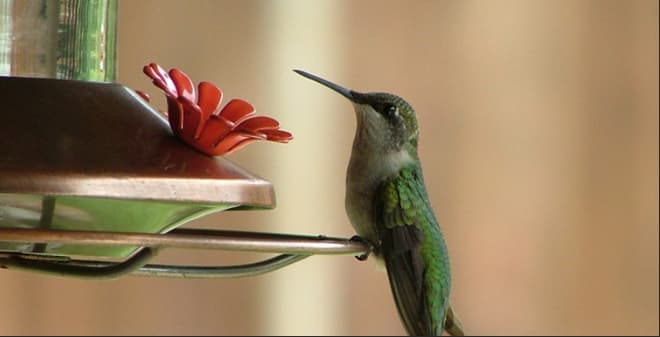Winter Warriors: Unveiling How Birds Conquer the Cold
Amidst the winter's icy grip, where landscapes transform into frosty realms, birds continue their daily ballet, unfazed by the snow's embrace. Ever noticed them, perched like tiny sentinels on frozen branches, without a shiver? Many wildlife have their dens to survive the winter, but how do these delicate beings brave the biting cold? Do their tiny feet quiver unseen beneath their feathery cloaks, or are they armed with nature's secret defenses against the chill? This enigma extends further – are these avian marvels warm-blooded survivors or cold-blooded beings, subtly enduring the winter's wrath?

Are Birds Cold-Blooded or Warm-Blooded?
When we think about how birds make it through the winter, the first thing to ask is: Are they cold-blooded or warm-blooded? This is super important because it shapes how birds handle the chilly season. And yep, birds are warm-blooded, which is pretty awesome. It means they've got this built-in thermostat that keeps their body temp just right, even when it's super chilly outside.
Let's break down what being warm-blooded means compared to their cold-blooded cousins, to get why this is such a big deal.
What is Warm-Blooded?
In the realm of warm-blooded marvels, think of the hustle of urban pigeons and the majestic soaring of eagles, right alongside the serene deer in the forests and the ever-curious dogs in our homes. They're all part of this vibrant club. Their magic trick? A metabolism that's like an internal furnace, always burning, ensuring they stay ready for action or relaxation, whether it's a snowy day or a sunny one. This means more food hunts and snack breaks to fuel their adventures.
What is Cold-Blooded?
On the flip side, the cool characters like the laid-back turtles sunning on a log, the sleek snakes slithering in the warmth, and the colorful fish gliding in tropical waters play by the rules of their surroundings. Their lifestyle shifts with the weather, taking it easy when the cool season rolls in, as their body's engine cools down, mirroring the world around them.
Why Birds are Warm-Blooded?
Birds, from the tiny, flitting hummingbirds to the regal swans gliding on icy lakes, are the epitome of warm-blooded prowess. Their feathered coats do more than just look pretty; they act like high-tech insulation, keeping them snug in a variety of climates. Paired with a high-octane metabolism—think of it as nature's energy drink—they're always on the move, agile in the air and quick on their feet, making them survival experts whether it's in the heart of the city or the depths of the wilderness. This innate warmth allows them to grace every corner of the globe, from the frosty poles to the steamy tropics, living their best life in every season.
How Birds Stay Warm in Winter
A. Physical Adaptations
-
Feathers: The Ultimate Winter Coat Think of feathers as the bird's down jacket, locking in warmth like a champ. The Snowy Owl is the winter fashion icon here, rocking a full-body feather ensemble that keeps it snug in the Arctic chill.
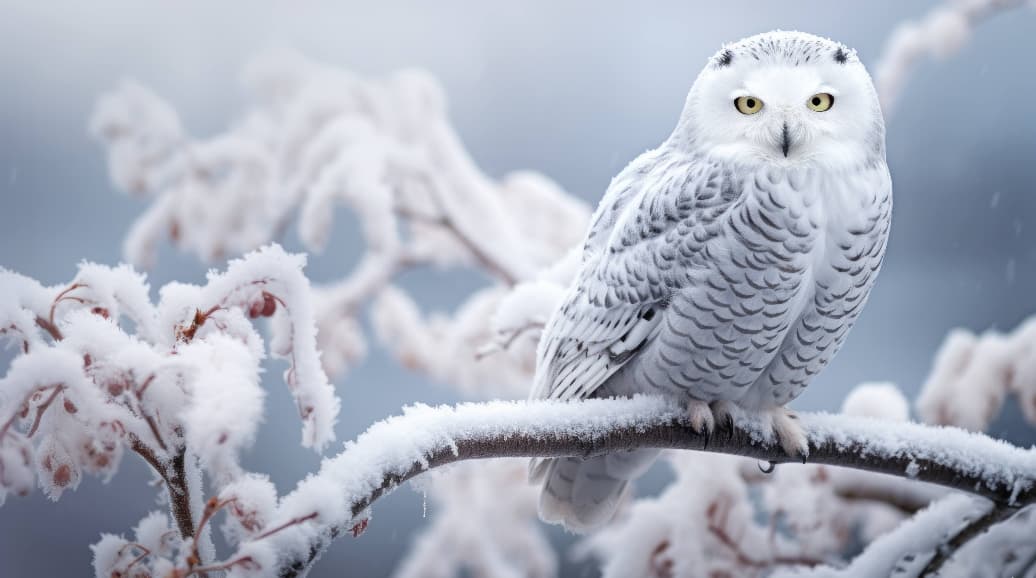
-
Fat Layers: The Built-In Heater As winter approaches, birds like the Common Eider duck pack on the pounds—not for looks, but for warmth. This layer of fat acts like a cozy blanket, storing energy for the lean times.
-
A Fresh Look for the Season: Winter Plumage The American Goldfinch knows the importance of a wardrobe update, swapping out its summer look for a thicker, fluffier set of feathers to keep the cold at bay.
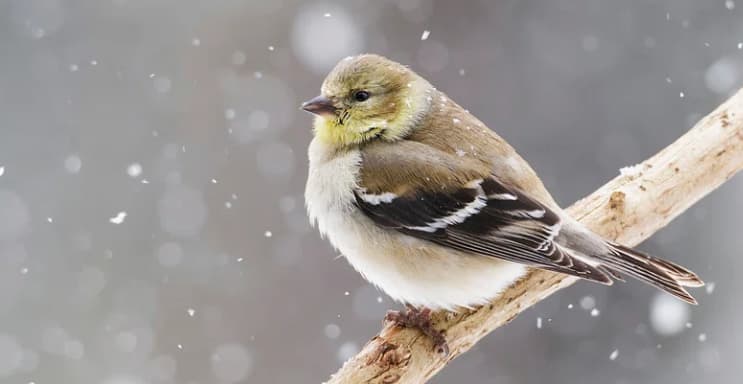
B. Behavioral Adaptations
-
Snuggle Fest: The Art of Huddling Penguins have mastered the group hug, huddling together to beat the cold. It's all about sharing is caring when it comes to staying warm.
-
Sun Worship and Shivers: The Warm-Up Routine Sparrows take every chance to soak up the sun, turning those rare winter rays into warmth. And when that's not enough, they've got shivering down to an art form, generating heat with rapid muscle twitches.
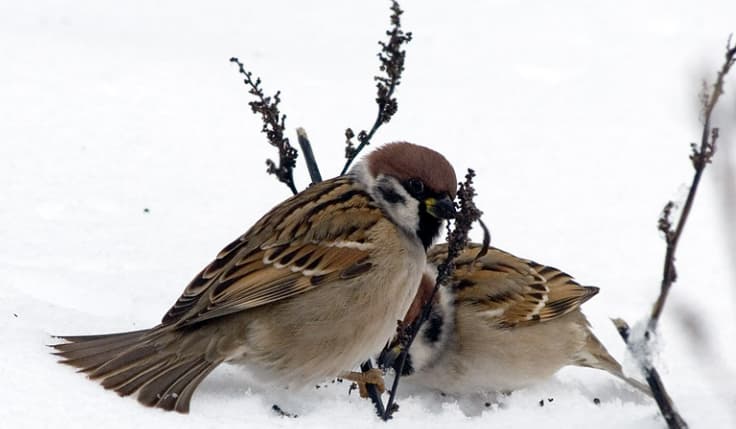
-
The Ultimate Getaway: Migration The Arctic Tern is the globe-trotter of the bird world, flying to warmer lands in a daring escape from the winter freeze, all in the pursuit of endless summer.
C. Physiological Adaptations
-
Cranking Up the Heat: Metabolic Magic Chickadees have a neat trick, boosting their metabolism to keep the chill at bay, a little like turning up the thermostat from within.
-
Cold Feet, No Problem: Ingenious Circulation Ducks are walking on ice with no worries, thanks to a genius plumbing system in their legs that keeps their body heat locked in.
-
Power Nap: Torpor The Hummingbird takes energy saving to the next level with torpor, dialing down its metabolism for a cozy, low-energy snooze until the sun comes back up.
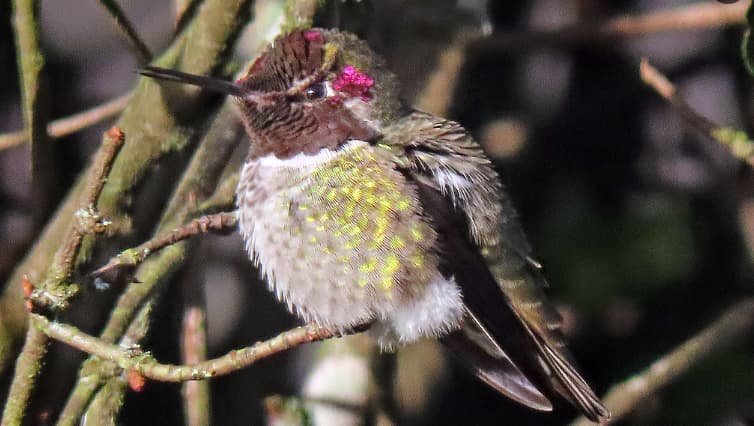
How We Help Birds?
Even though birds have their built-in heater thanks to being warm-blooded, winter doesn't give them a free pass. They've got to hustle harder to find food, shiver through the cold, and tough it out in some pretty rough weather. But here's the cool part: we can lend a hand.
That's where we come in, extending a helping hand (or rather, a helping feeder) to our avian allies. By setting up bird feeders, we provide a crucial lifeline, a buffet of seeds, nuts, and suet that serves as both fuel and warmth for these tiny warriors. It's not just about the food; it's about giving birds the energy they need to keep their internal furnaces roaring, ensuring they can fly, forage, and fend off the cold.
Water is another critical resource we can offer. A birdbath with a heater or even just fresh, unfrozen water can be a winter oasis for birds, helping them stay hydrated and clean, which is vital for maintaining the insulating properties of their feathers.
Lastly, planting native shrubs and trees offers shelter from the wind and cold, creating natural havens where birds can rest and conserve energy. It's these acts of kindness and stewardship that make our gardens and communities welcoming havens for birds, helping them not just survive but thrive during the winter months.
By stepping up and providing resources like food, water, and shelter, we can make a significant difference in their lives. A great way to start is by using something like the Camojojo bird feeder. Setting up a bird feeder with camera in your backyard could spark a greater interest in bird conservation and offer a front-row seat to the remarkable world of birds braving the winter. It's also a fantastic window for us and our community to observe and learn more about these resilient winter warriors.






